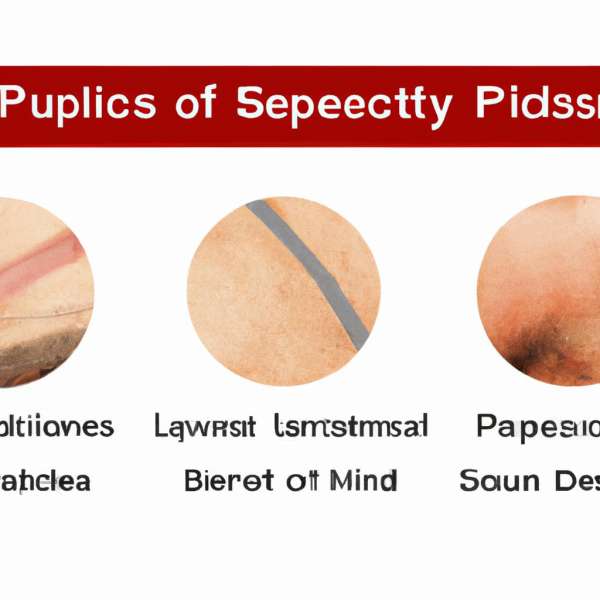Comprehending Scarring and Disfigurement Claims: A Guide to Seeking Justice
When life leaves indelible marks—whether from an accident, a medical mishap, or an unfortunate act of negligence—the emotional and physical scars can be profound. For those impacted, the path to recovery often intersects with the intricate realm of legal claims. Scarring and disfigurement can not only alter one’s physical appearance but also significantly affect their quality of life, mental health, and social interactions. Grasping the complexities of scarring and disfigurement claims is crucial for victims seeking compensation. This article explores the nuances of these claims, shedding light on the legal framework, the necessary evidence to support claims, and the emotional toll on those who bear these marks. Whether you are a victim exploring your options or simply seeking to understand the implications of such claims, join us as we delve into this critical topic, embarking on a journey toward justice and recovery.

Identifying Various Scars and Disfigurements in Personal Injury Cases
When evaluating scarring and disfigurement in personal injury cases, it is essential to understand the different types of scars that can result from injuries. Each type has distinct implications for the affected individual and their potential claims for damages. Recognizing the different classifications of scars can significantly influence legal outcomes.
Common categories of scars include:
- Hypertrophic Scars: These raised, red scars are often due to excessive collagen production during the healing process.
- Keloid Scars: Similar to hypertrophic scars, keloids extend beyond the original injury site and can be itchy or painful.
- Atrophic Scars: These sunken scars often result from acne, chickenpox, or other injuries that damage the skin.
- Contracture Scars: Formed when the skin tightens due to severe burns or surgery, these scars often limit movement and flexibility.
Each type presents specific considerations for compensation claims, as they can affect appearance, psychological well-being, and quality of life. Below is a concise comparison highlighting key traits:
| Type of Scar | Appearance | Common Causes | Effects on Victims |
|---|---|---|---|
| Hypertrophic | Raised, red | Injury, surgery | May improve over time |
| Keloid | Raised, extends beyond injury | Genetic predisposition | Pain, psychological impact |
| Atrophic | Sunken | Acne, chickenpox | Low self-esteem, anxiety |
| Contracture | Tightened skin, limited movement | Burns, surgical procedures | Reduced mobility, chronic pain |
A comprehensive understanding of these types of scars not only helps establish the severity of an injury but also plays a crucial role in supporting claims for potential compensation. It is vital for legal professionals to meticulously document all aspects of their client’s scarring and disfigurements to effectively advocate for their rights.

The Emotional and Psychological Consequences of Scarring
Scarring and disfigurement can have a profound impact on an individual’s psychological well-being and emotional health. Many people experience a range of emotions as they come to terms with their scars, which may have resulted from accidents, surgeries, or illnesses. **Emotional responses** to these changes can be complex and multifaceted, often requiring professional support to navigate.
Emotional and psychological impacts of scarring can be diverse, but commonly include:
- Anxiety: The fear of being judged or mocked can deter individuals from participating in social activities.
- Depression: Ongoing feelings of sadness and hopelessness may develop as individuals come to terms with their changed appearance.
- Low Self-Esteem: Scars can negatively affect body image, diminishing confidence in both personal and professional environments.
- Isolation: The inclination to avoid social interactions can lead to withdrawal from loved ones, intensifying feelings of loneliness.
These emotional hurdles often surface in everyday life, influencing relationships, job performance, and overall life satisfaction. People dealing with scarring may find it challenging to maintain their regular routines or explore new opportunities due to the emotional weight they carry. Additionally, the psychological effects of disfigurement can complicate physical recovery, as mental health is deeply intertwined with physical health.
The table below outlines some common psychological effects of scarring and suggests potential coping strategies:
| Psychological Effect | Coping Strategy |
|---|---|
| Anxiety | Mindfulness and relaxation techniques |
| Depression | Therapy or counseling support |
| Low Self-Esteem | Positive affirmations and social support |
| Isolation | Joining support groups or community activities |
navigating the emotional and psychological challenges of scarring requires a deep understanding of its complexities and seeking the right support. Customized interventions, whether therapeutic or social, can help individuals regain their confidence and lead fulfilling lives beyond their physical scars.
Understanding the Legal Process for Scarring and Disfigurement Claims
When seeking compensation for scarring and disfigurement, comprehending the legal process is essential to ensure victims receive the justice they deserve. The process typically starts with a detailed examination of the incident, determining if negligence was involved. This involves meticulous documentation of the event and a thorough review of medical records to establish a clear link between the injury and the resulting scars or disfigurements.
Working with experienced legal professionals who specialize in personal injury law can greatly improve the chances of a successful outcome. They can assist victims through:
- Case Evaluation: This involves analyzing the specifics of the case, including liability and potential compensation.
- Gathering Evidence: Collecting necessary documentation, such as medical reports, photographs of injuries, and expert testimonies, which are crucial in supporting the claim.
- Filing Legal Claims: Submitting the appropriate legal documents within the specified timelines to initiate the claim process.
- Negotiation: Often, insurance companies may attempt to settle claims quickly. Having legal representation is vital for negotiating fair compensation.
Potential damages in these claims can be categorized into various types, each reflecting the victim’s experience and the impact of the scarring or disfigurement on their quality of life. Below is a summary of typical categories of damages sought in these claims:
| Type of Damage | Description |
|---|---|
| Medical Expenses | Costs associated with treatment, surgeries, and rehabilitation. |
| Pain and Suffering | Compensation for physical pain and emotional distress caused by disfigurement. |
| Loss of Income | Compensation for wages lost due to inability to work after the injury. |
| Future Earnings | Loss of potential income if disfigurement affects future career opportunities. |
Maintaining clear and consistent communication with your legal team is crucial throughout the legal process. Staying updated on case developments and strategic adjustments will enable victims to actively engage in their quest for justice.

Crucial Documentation and Evidence to Bolster Your Case
To build a compelling case for scarring and disfigurement claims, the quality and thoroughness of your documentation are paramount. Collecting a diverse range of evidence that accurately depicts the severity and impact of your injury is essential. Here are some critical types of documentation to gather:
- Medical Records: Comprehensive medical histories, treatment plans, and surgical notes serve as robust evidence of your condition.
- Photographic Evidence: Before-and-after photos that clearly show the changes in your appearance, emphasizing the emotional and physical impact of the injury.
- Psychological Evaluations: Reports from mental health professionals that detail any psychological distress or trauma resulting from your disfigurement.
- Witness Statements: Testimonies from friends, family, or colleagues who can attest to the changes in your quality of life and emotional wellbeing.
Creating a timeline of your experiences following the injury can also be beneficial in demonstrating how the disfigurement has affected your daily activities, relationships, and overall lifestyle. A well-organized timeline can help illustrate your struggles comprehensively. Here’s a suggested structure for this timeline:
| Date | Event | Impact |
|---|---|---|
| Month/Year | Initial Injury | Physical pain, immediate emotional distress. |
| Month/Year | Medical Treatment | Started rehabilitation; difficulty engaging socially. |
| Month/Year | Follow-up Surgery | Further physical pain; negative impact on self-esteem. |
| Month/Year | Return to Work | Struggled with work interactions; faced discrimination. |
Engaging with legal professionals who specialize in personal injury claims can also help you identify additional resources or evidence, further strengthening your case. By being meticulous and organized in your approach to gathering documentation, you lay the groundwork for a persuasive claim that accurately represents your experience.
Final Thoughts
Dealing with the complexities of scarring and disfigurement claims can be overwhelming, but understanding the intricacies involved is essential for those affected. Every scar tells a story and serves as a reminder of past experiences, challenging societal perceptions of beauty and identity. As we have discussed, the legal system provides avenues to seek compensation and acknowledgment for these significant changes, recognizing not only the physical but also the emotional and psychological impacts.
Whether you are a claimant embarking on this journey or a legal professional guiding your clients, knowledge is your most powerful tool. As we strive for a society that values empathy and understanding, addressing scarring and disfigurement claims with sensitivity and insight can pave the way for healing and justice. With this knowledge, we can foster conversations that go beyond appearances, celebrating the resilience of the human spirit in the face of adversity. Thank you for joining us in exploring this important topic, empowering individuals to reclaim their narratives and advocate for their rights.
Unlocking the Secrets Behind Scarring and Disfigurement Claims
Understanding Scarring and Disfigurement Claims
Scarring and disfigurement claims are a critical part of personal injury law. These claims arise when an individual suffers an injury that leads to permanent scarring or disfigurement, which can significantly impact their quality of life. Understanding the intricacies of these claims can help you secure the compensation you deserve.
What Constitutes Scarring and Disfigurement?
Scarring and disfigurement refer to the long-lasting marks or changes to one’s physical appearance resulting from an injury. These can include:
- Visible scars from cuts or lacerations
- Burn marks causing visible discoloration
- Changes in facial structure due to fractures or surgical procedures
- Loss of limb or appendages
The Legal Process for Scarring and Disfigurement Claims
Filing a successful scarring and disfigurement claim involves several key steps:
Medical Documentation
Thorough medical documentation is crucial. This includes reports from doctors, surgeons, and specialists detailing the extent of the injury and the expected long-term effects. Photos of the scars or disfigurement at different stages of healing can also be instrumental.
Consulting with an Attorney
An experienced personal injury attorney can help navigate the complexities of the legal process. They will work to gather evidence, consult with medical experts, and negotiate with insurance companies on your behalf.
Filing the Claim
Once all documentation is in place, your attorney will file the claim with the appropriate court. This document will outline the nature of your injury, the evidence supporting your claim, and the amount of compensation sought.
Negotiation and Settlement
Most claims are settled out of court through negotiations. Your attorney will work to achieve the best possible settlement to cover your medical expenses, pain and suffering, and other damages. If a fair settlement cannot be reached, the case may go to trial.
Benefits of Filing a Scarring and Disfigurement Claim
Filing a claim offers several significant benefits:
- Financial Compensation: Covers medical expenses, rehabilitation, and other associated costs.
- Pain and Suffering: Compensation for the physical and emotional distress caused by the injury.
- Loss of Earnings: Recoup lost wages if the injury affects your ability to work.
- Quality of Life: Provides funds to enhance your quality of life, such as cosmetic surgery.
Practical Tips for Maximizing Your Claim
Successfully navigating a scarring and disfigurement claim requires careful planning and action. Here are some practical tips:
Keep Detailed Records
Maintain a comprehensive record of all medical treatments, follow-up appointments, and any additional costs incurred due to the injury.
Seek Medical Attention Immediately
The sooner you receive medical attention, the stronger your claim will be. Prompt care helps to document the extent and severity of the injury.
Document Your Emotional and Psychological Struggles
Keep a journal to record the emotional and psychological impacts of your injury, including anxiety, depression, and other related struggles. This can be crucial in securing compensation for pain and suffering.
Follow Your Doctor’s Advice
Adhere strictly to your doctor’s treatment plan to demonstrate your commitment to recovery and to avoid any claims that you worsened your condition.
Case Studies: Real-Life Experiences
| Case | Details | Outcome |
|---|---|---|
| John’s Burn Injury | John suffered second-degree burns from a workplace accident. He followed proper protocols and documented his treatment progress. | Received a $150,000 settlement covering medical expenses and pain and suffering. |
| Jane’s Car Accident | Jane had facial scarring from a car accident. She immediately sought legal advice and consistently followed her treatment plan. | Secured $200,000 in compensation for medical procedures and emotional distress. |
Expert Advice: Firsthand Experiences
Speaking to individuals who have gone through the process can provide valuable insights. Here are some firsthand experiences:
Lisa’s Story: “Relentless but Worth It”
“The process was demanding and required a lot of documentation, but having a reliable attorney made all the difference. My attorney’s experience in handling similar cases ensured I received the compensation I needed to reconstruct my face.”
Michael’s Insight: “Never Skip Documentation”
“Photographs and medical records were crucial in my case. The more detailed and consistent my records were, the more undeniable my claim became. My advice? Document everything.”
Common Challenges in Scarring and Disfigurement Claims
These cases can be complex and come with unique challenges:
Proving the Extent of Damage
Providing indisputable evidence of the extent and permanency of your injury is often the biggest hurdle. Detailed medical records and expert testimony are critical.
Emotional and Psychological Component
Quantifying emotional and psychological suffering can be difficult but is necessary for comprehensive compensation. Keeping records of therapy sessions and psychological assessments can help.
Insurance Company Tactics
Insurance companies may attempt to minimize your claim. An experienced attorney who’s familiar with these tactics can negotiate more effectively on your behalf.
Resources and Support
Numerous resources and organizations specialize in providing support for individuals with scars and disfigurements:


